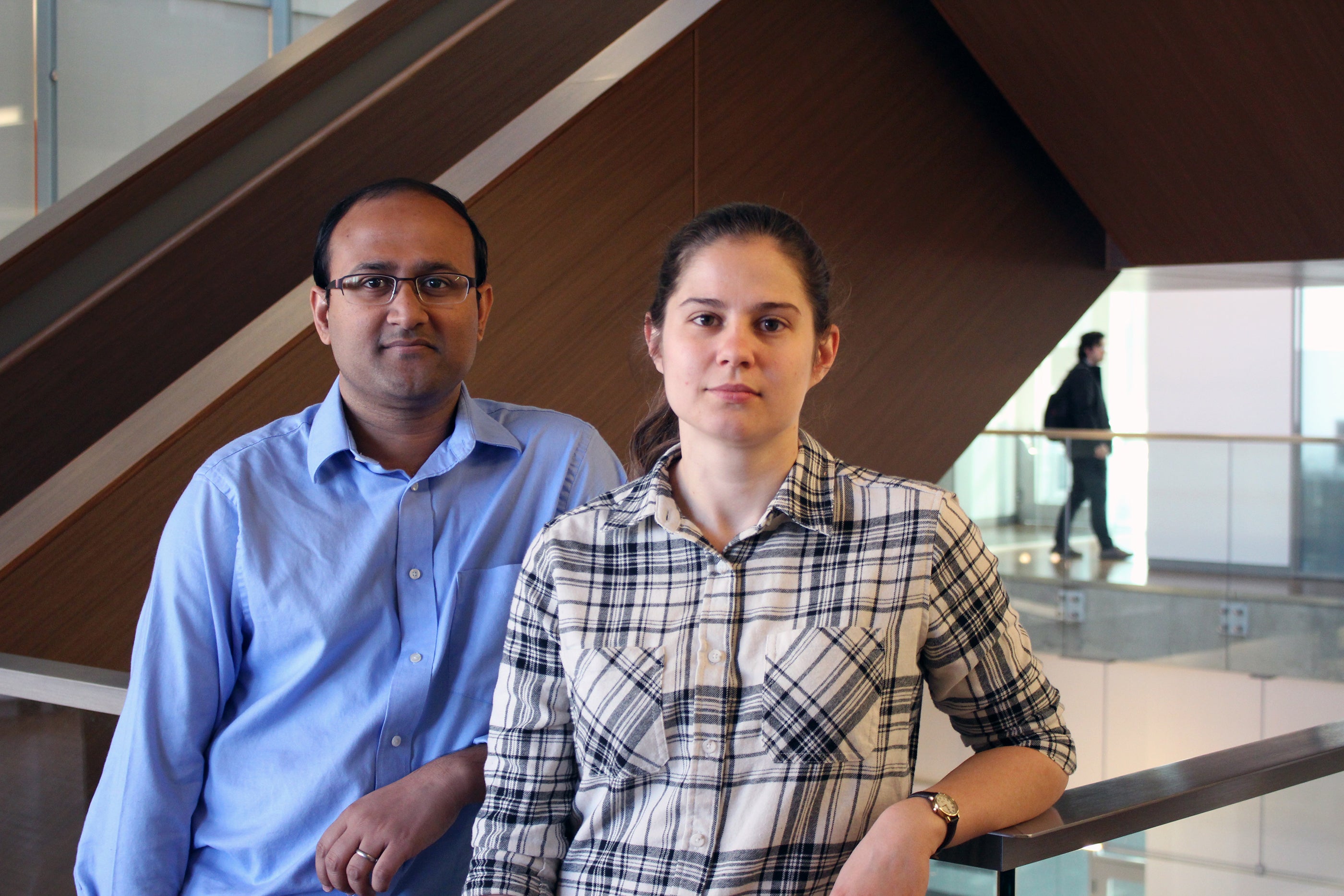Two alumni attendees of the Institute for Quantum Computing’s (IQC) 2015 Quantum Innovators (QI) workshop joined IQC as faculty members on November 2. The workshop, held each year, brings the most promising researchers exploring the frontiers of quantum physics and engineering to IQC. Experimentalists K. Rajibul Islam and Crystal Senko have been jointly appointed as Assistant Professors with IQC and the Department of Physics and Astronomy in the Faculty of Science at the University of Waterloo.

Islam will lead the Laboratory for Quantum Information with Trapped Ions (QITI) to study quantum information with laser-cooled trapped ions. “Before we build a quantum computer, “said Islam, “there are fundamental physics questions to tackle. I will be concentrating on encoding and manipulating quantum information in a quantum many-body system using trapped ions.” Previously, Islam was a postdoctoral researcher at the MIT-Harvard Center for Ultracold Atoms (CUA), where he worked in the research groups of Prof. Markus Greiner (Harvard) and Vladan Vuletic (MIT).
Senko also did her postdoctoral research at CUA, though at Harvard University with Misha Lukin, focused on the development of a photonic crystal waveguide for information transfer between atoms. At IQC, Senko will explore how single atoms encoded with multiple levels of information, called qudits, can improve the efficiency of encoding information in quantum systems. She’ll be working with trapped ions to explore the possibilities of building quantum systems, including spin chains with complicated behaviour that has yet to be demonstrated in a lab. “Trapped ion systems are flexible, and can be used for quantum computation or for studying quantum simulations,” said Senko.
Islam and Senko performed some of the first experiments demonstrating laser-cooled trapped ions as a promising experimental platform for quantum simulation at the University of Maryland with the research group of Chris Monroe.